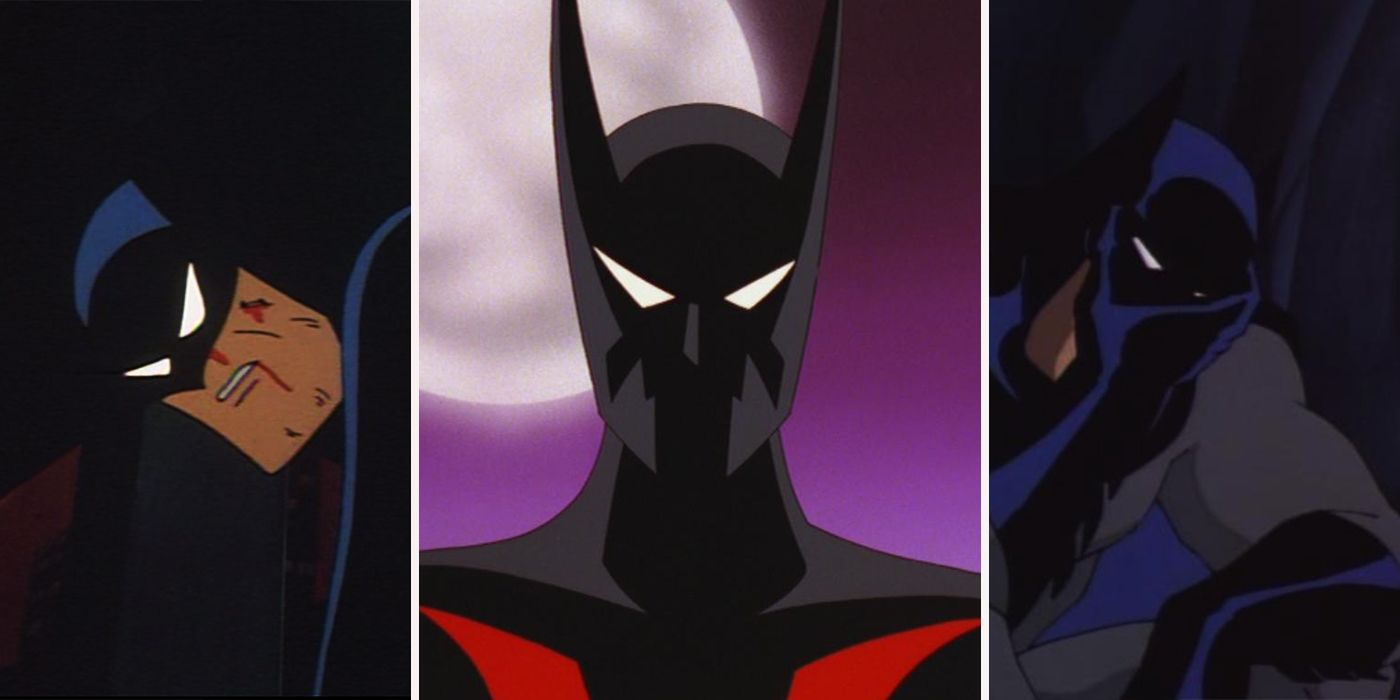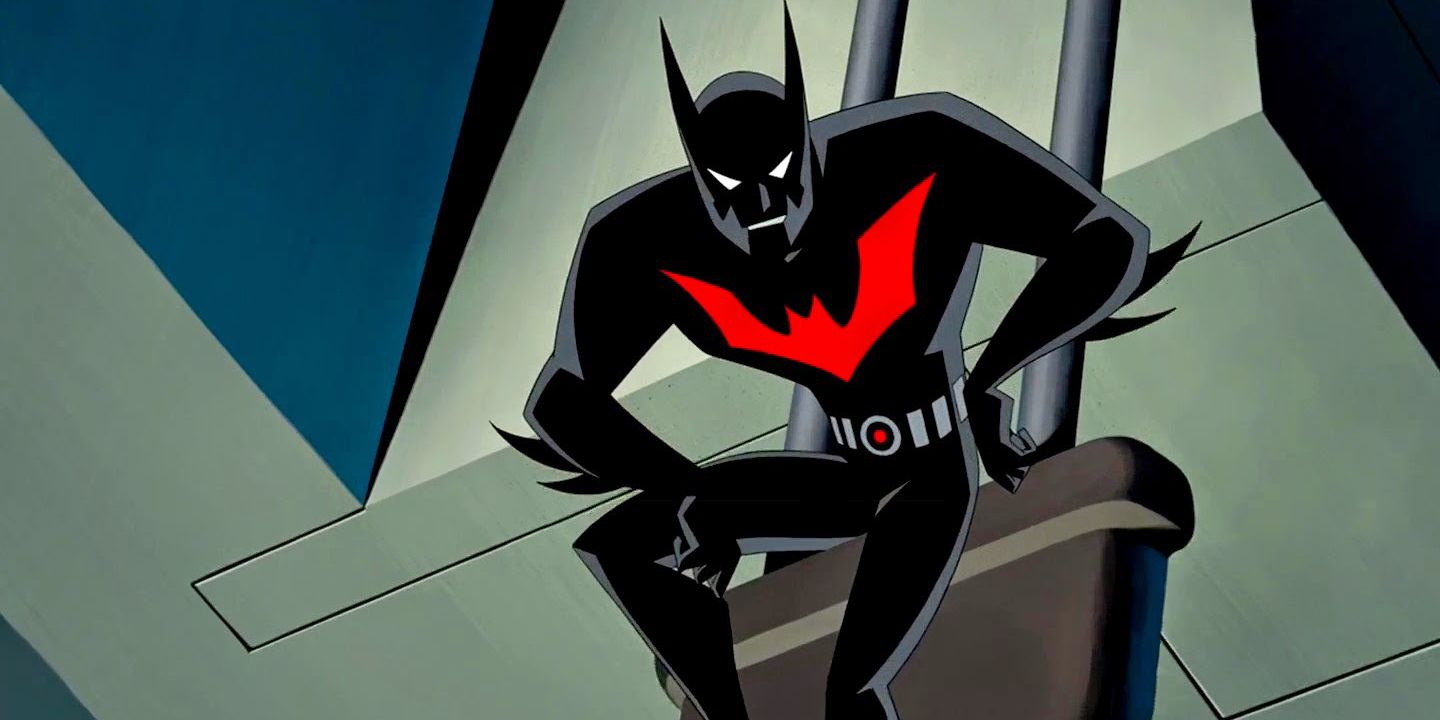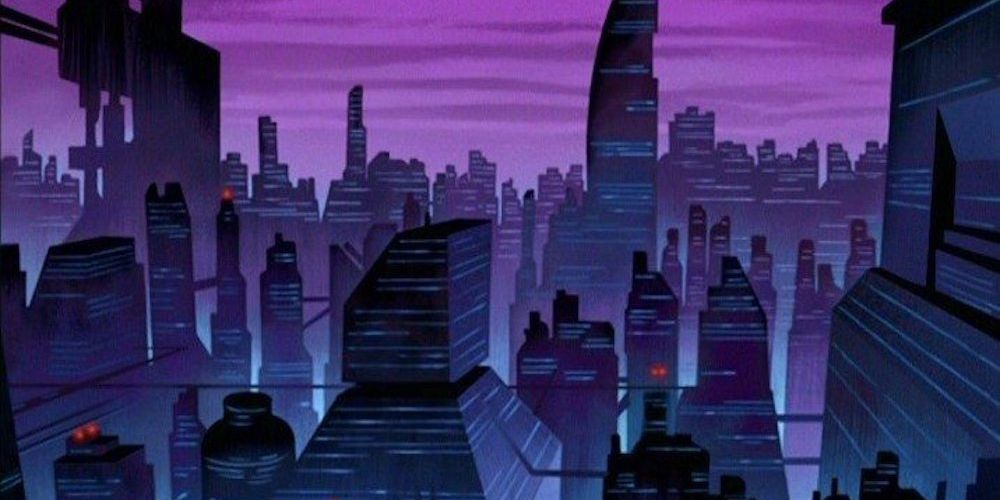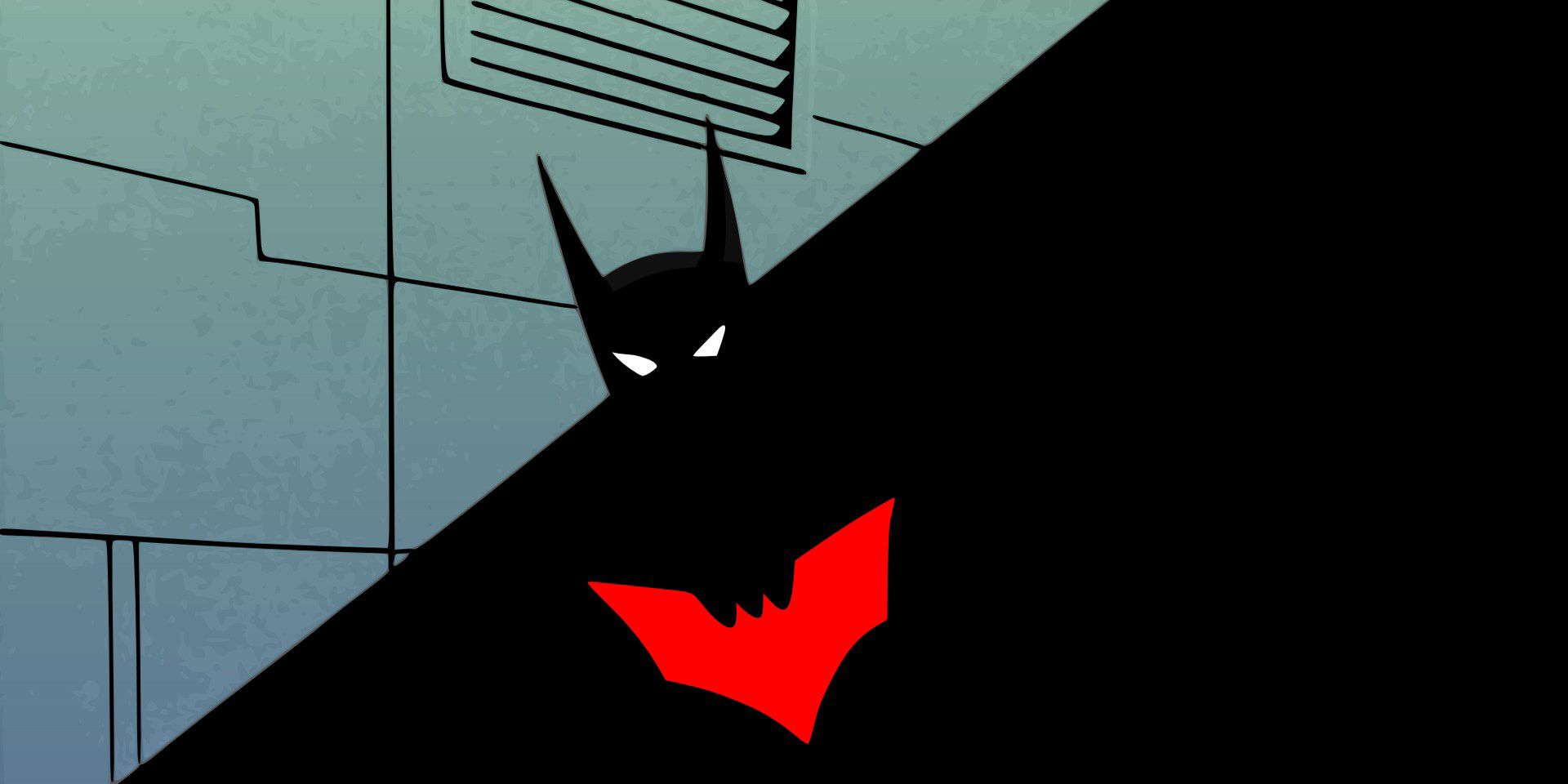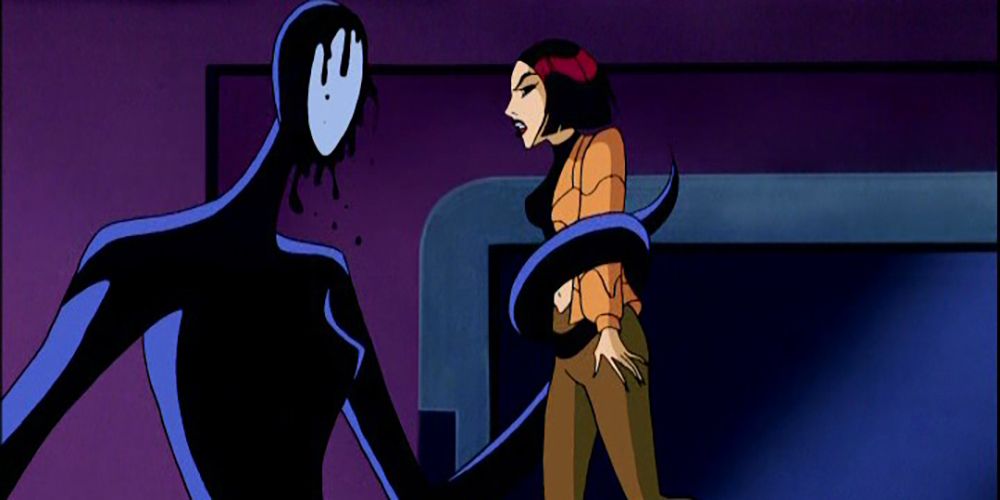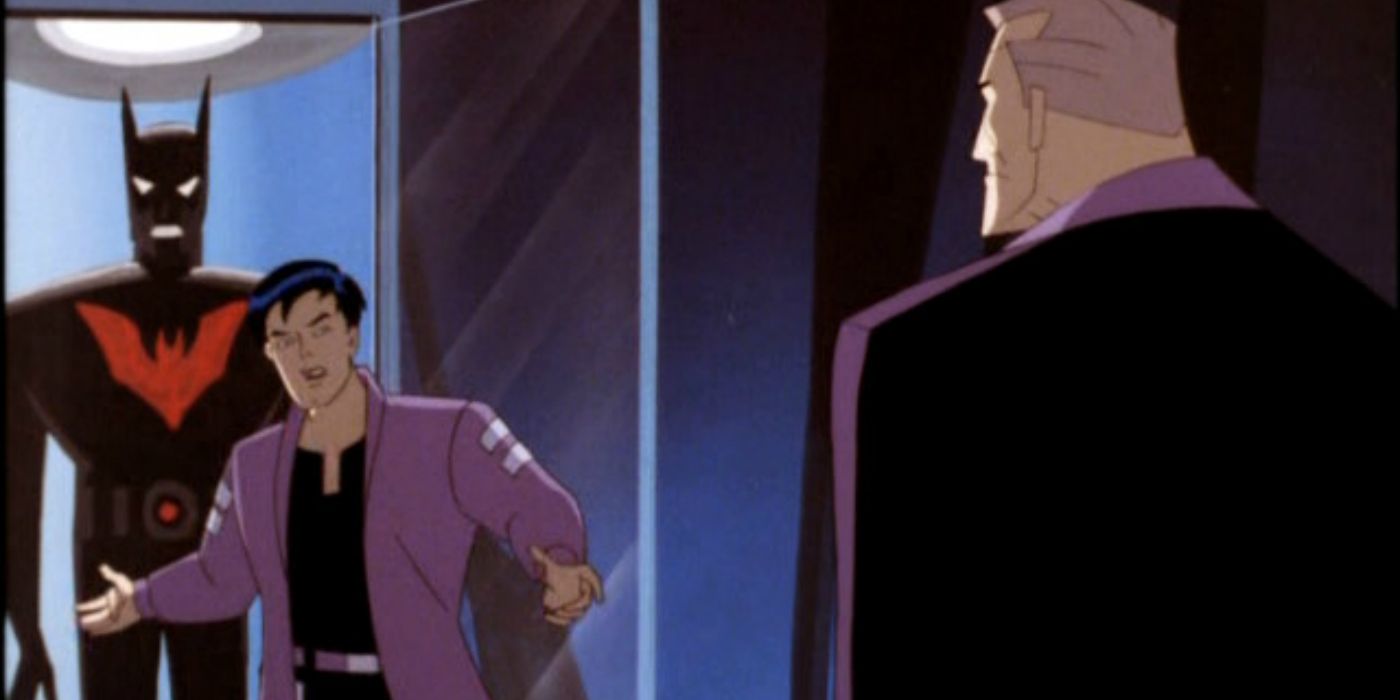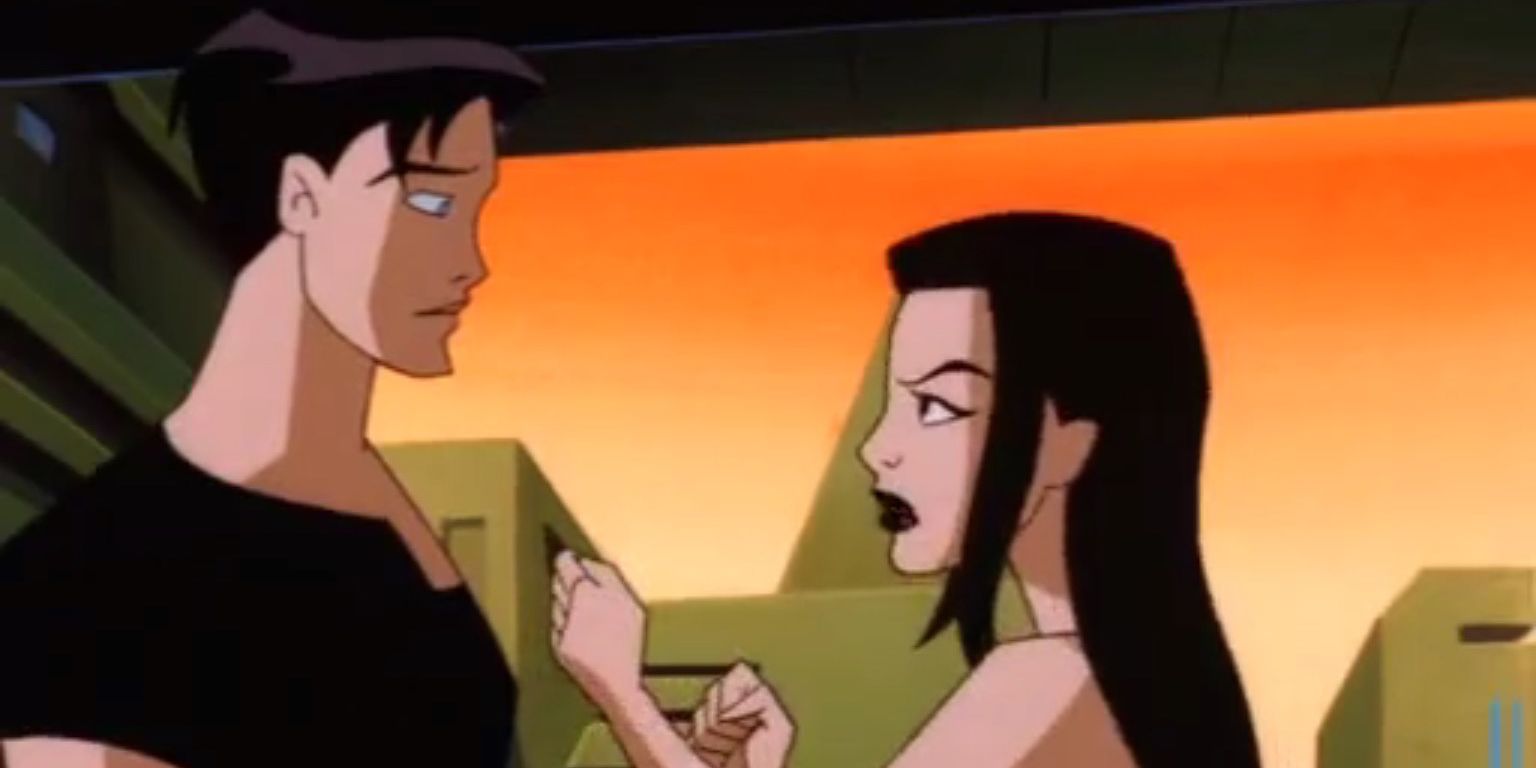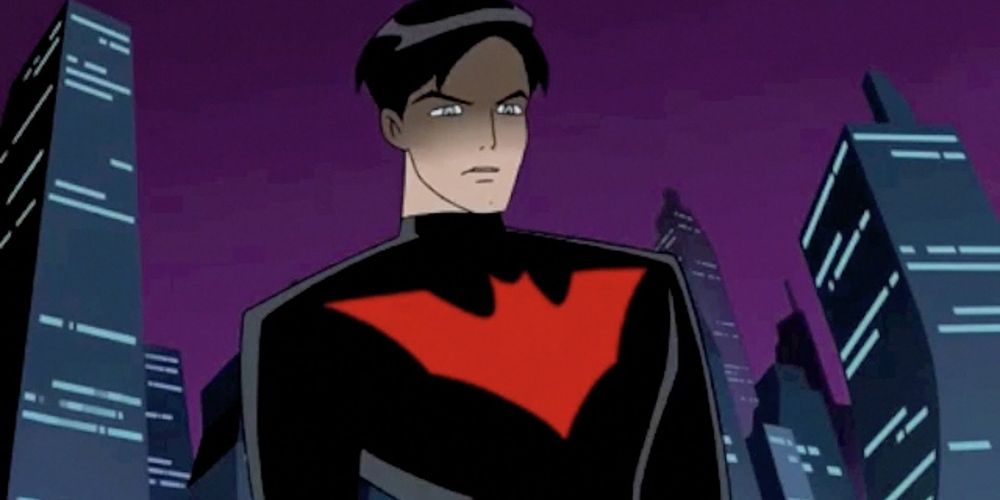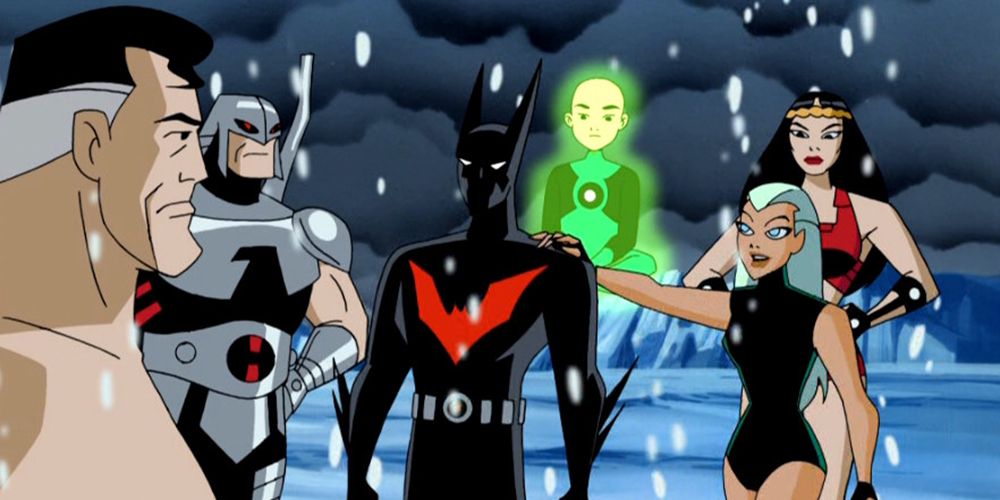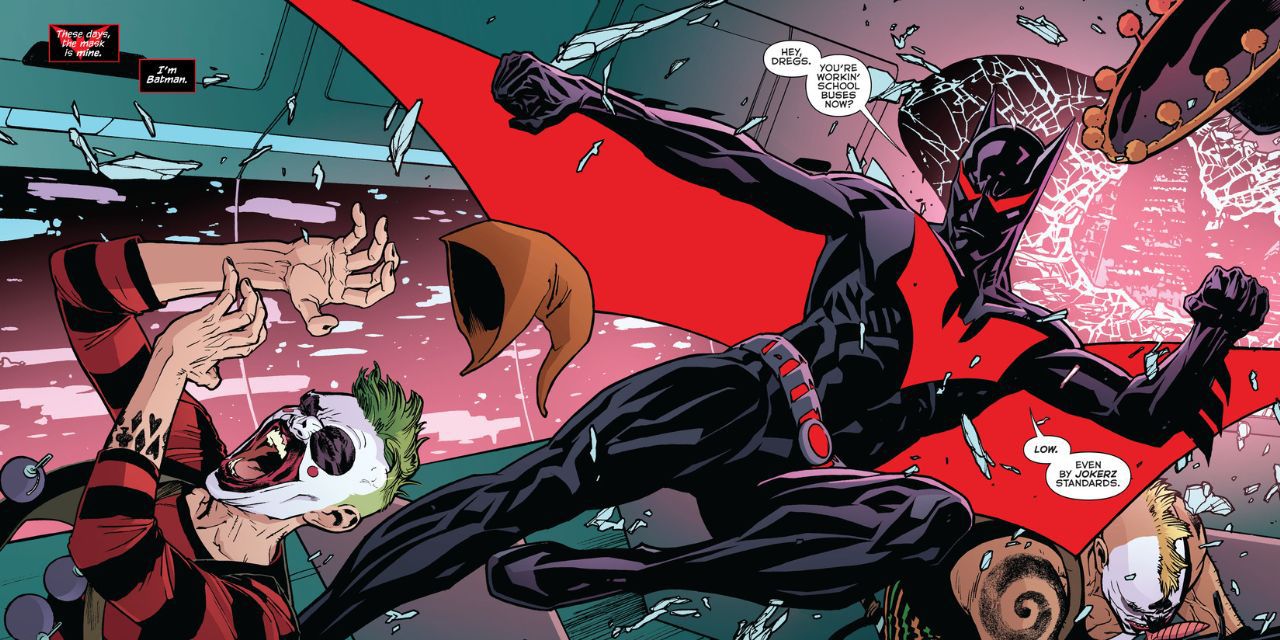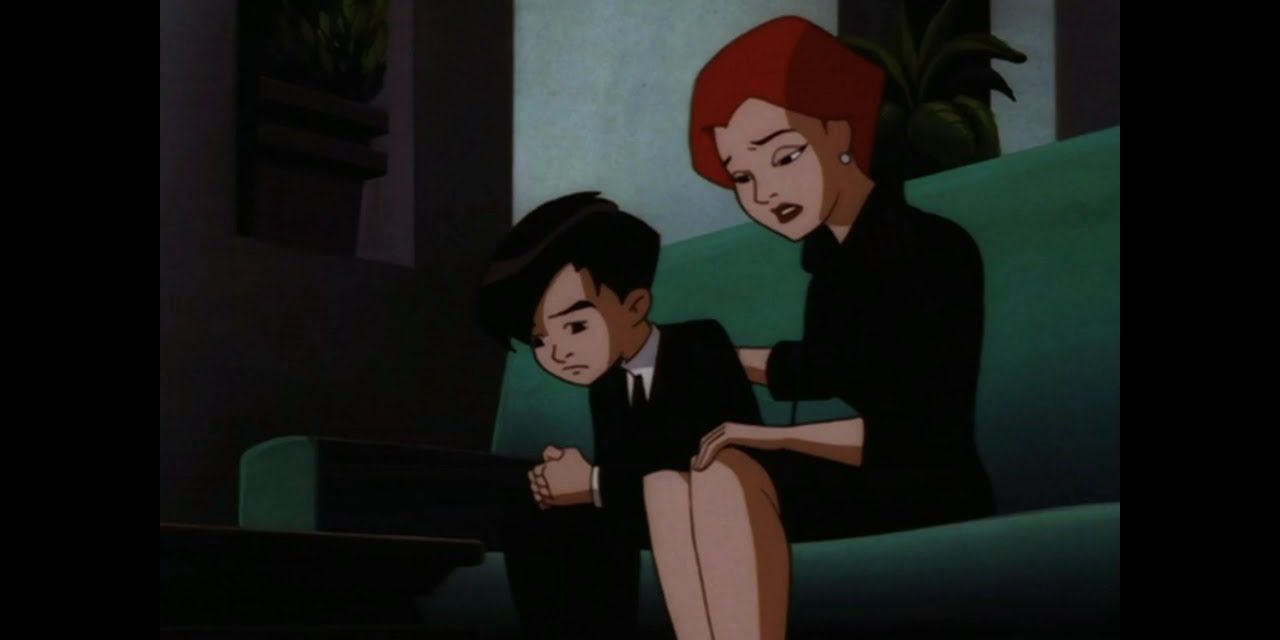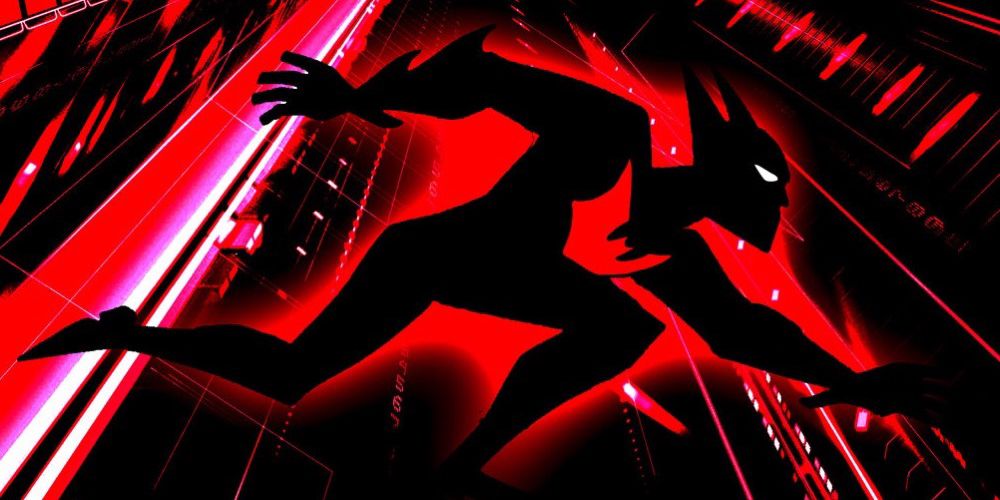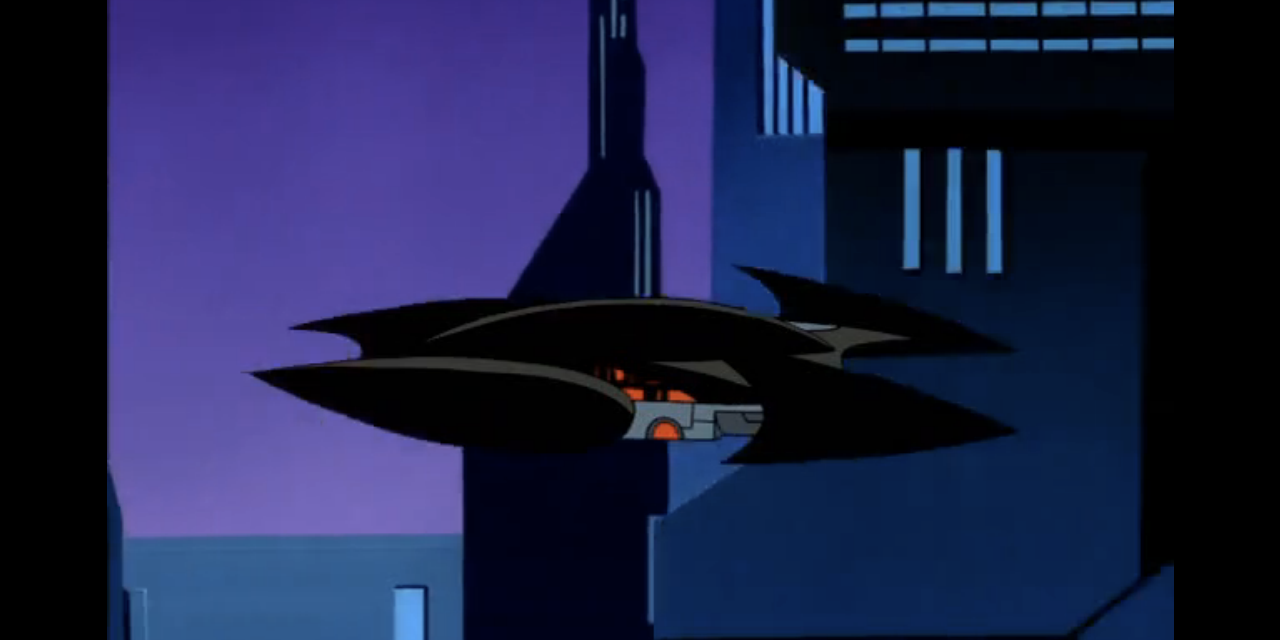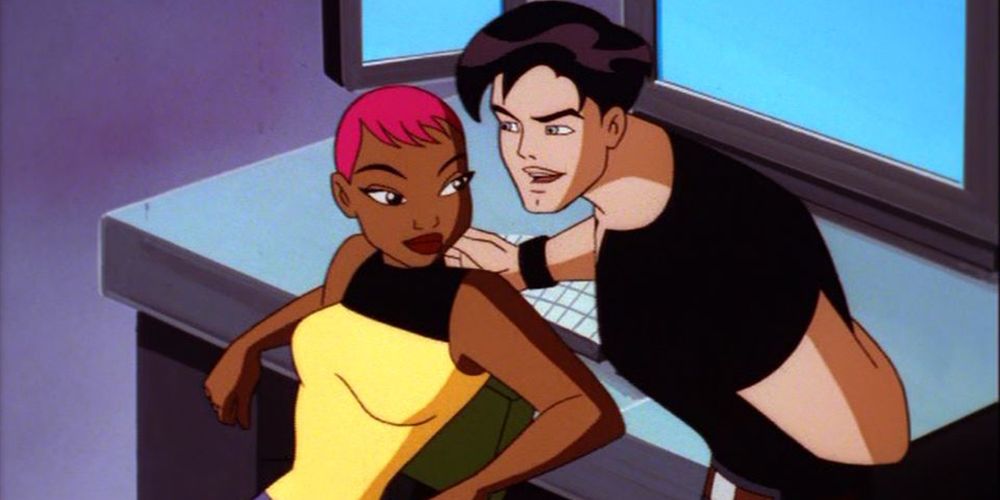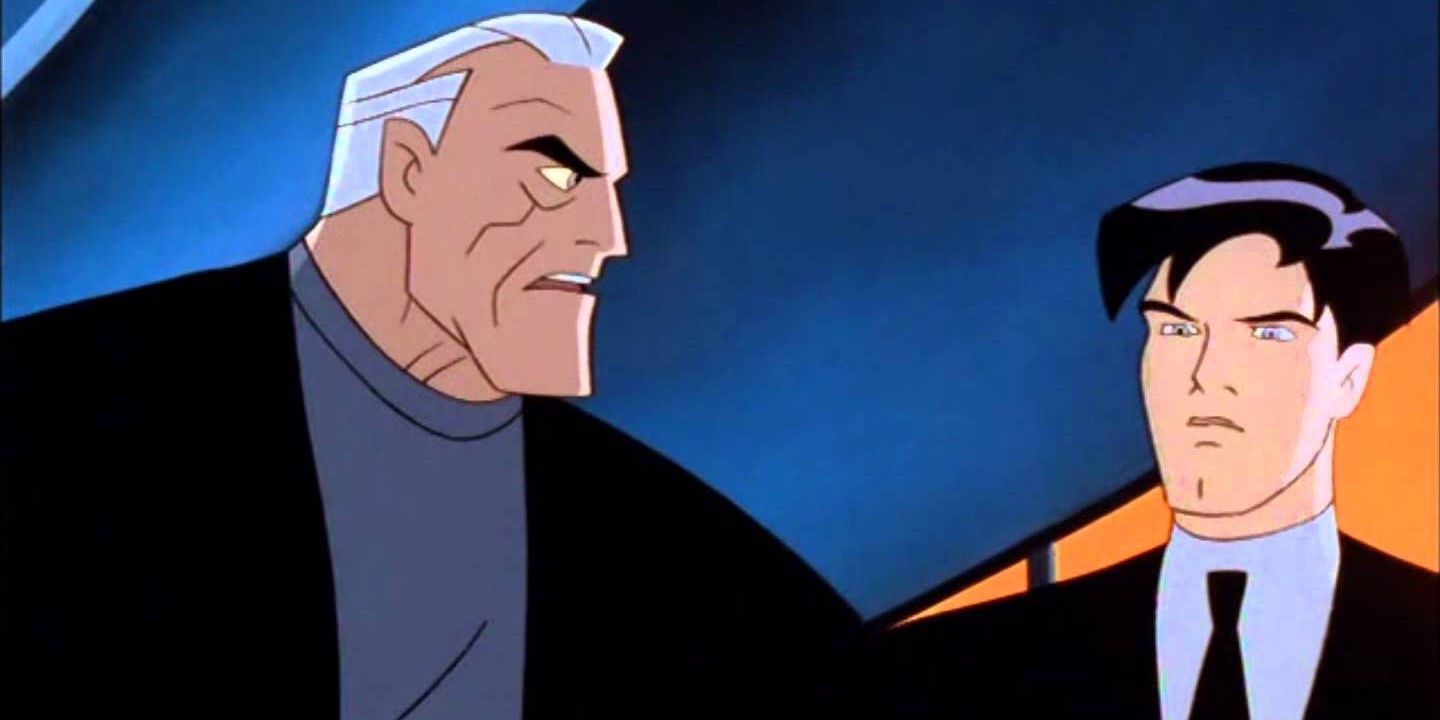Now wait, wait there. Hold on a minute. Put down your pitchforks and hear us out. Yes, Batman: The Animated Series is an all-time classic cartoon that created the entire DC Animated Universe, put several prominent voice actors on the pop culture map, and is many peoples' favorite version of the Dark Knight. But no matter how inspired Mark Hamil's Joker is, BTAS is not perfect -- no show is. And where it falters, Batman Beyond, one of its many spin-offs, capitalizes. Made by the same people who produced the original show, Beyond had the advantages of hindsight and advances in animation technology.
RELATED: 15 Moments From Batman: The Animated Series That Broke Your Heart
The story of high school student Terry McGinnis taking up the mantle of the Batman years after Bruce Wayne abandons the cowl slowly proved itself to be a significant improvement over the original series, following the tradition set by Star Trek: The Next Generation and Buffy the Vampire Slayer in being a spin-off that was better than the original almost by default. It may be hard to peer through the heavily tinted goggles of nostalgia, and admittedly nothing can match BTAS in terms of sheer cultural influence, but try to see things from an objective, pure perspective and keep reading.
15 IT STEPPED UP THE ANIMATION
The first three seasons of BTAS boasted a very distinct visual style of slightly rounded angles, heavy shadows, and vibrant colors. The fourth season, The New Batman Adeventures, and most of the other shows in the DCAU had improved computer generated animation that dove fully into the aesthetic, sporting jagged angles, brighter foregrounds, and more flowing movement.
The biggest beneficiary of this visual improvement was Batman Beyond, who's futuristic setting and highly dichromatic design worked perfectly with the new, sharper aesthetics. The technology and scope of Neo-Gotham accentuated the fluid motions and more illustrious colors better than those of the original series. One of the best examples of this was the occasional news flashes in the show, which used silhouetted figures instead of news anchors to really drive home the advantages of the improved visuals.
14 THE WORLD WAS BETTER
BTAS existed in a strange amalgam of different eras. The Gotham it presented seemed to simultaneously exist in the rug-pushing '80s, roaring '20s, Depression '30s, and even edged into the punkish '90s. The art-deco style sometimes clashed with Gotham's naturally gothic atmosphere and practically went to war with interiors that looked like they'd been decorated by Tony Montana. The alternating styles between BTAS and it's continuation in The New Batman Adventures didn't help the show's consistency.
Beyond's Neo-Gotham was much more straightforwards and streamlined. It was an anime-influenced futuristic megacity straight out of the pages of 2000 A.D. with vague influences from early 2000s' cyberpunk culture. The colossal super towers that featured in the show's opening theme easily dwarfed the skyscrapers of the original series both physically and metaphorically.
13 IT GOT LESS SILLY
No matter how dark and smart Batman: The Animated Series got, it never could fully shake itself away from the Silver Age Batman goofiness. Perhaps it was the stylized, square-jawed design, maybe it was the use of innately over-the-top characters and villains, but for one reason or another, BTAS wasn't able to completely separate itself from its silly predecessor.
This wasn't much of a problem for Batman Beyond. The futuristic aesthetic and grungy tone were completely at odds with the silver age of comics. Even the silliest episodes of BB never became as outright wacky as BTAS, and this includes the episode where Terry has to fight crime with the equivalent of a robot baby strapped to his back for a class assignment. Yet somehow, BB was able to distance itself from the silly nature of the Silver Age Batman but retained the humor and comedy of the original BTAS.
12 IT CREATED A WHOLE NEW ROGUES GALLERY
It's said that a hero is only as good as the villains they fight. Regardless of whether or not this is true, Batman's legendary Rogues Gallery is one of the most impressive parts of his mythos. But after almost 70 years, the classic criminals like Poison Ivy, Catwoman, and the Joker were becoming stale and repetitive. Fortunately, Batman Beyond arrived and delivered new, fresh villains who, while perhaps not iconic as the original lineup of Batman villains, were nevertheless impressive.
The silky and seductive Inque was a wonderful parallel to Catwoman. The origins of the irradiated Blight made him intrinsic to Terry's development as Batman. Even the new Royal Flush Gang was more interesting than any previous incarnation. Though none of them managed to reach the levels of pop cultural relevance as the first Batman's villains, they were no less cool and threatening.
11 IT ADDED ELEMENTS FROM SPIDER-MAN
For decades, comic readers have been in general agreement that the most interesting hero in DC comics was Batman and his Marvel counterpart was Spider-Man, albeit for very different reasons. Batman was a dark and traumatized hero, more at home in a Shakespearean tragedy than in pulp comics. Spider-Man was the exaggerated embodiment of the universally shared teenage experience. Both were fascinating characters in their own right, but neither could inhabit the other's intellectual territory.
That is to say Batman wouldn't make sense as a teenage drama and Spider-Man couldn't hack it in a dark and gritty philosophical drama. However, Beyond managed to incorporate both Spider-Man's high-school theater and his wisecracking superhero persona into Terry McGinnis. His lighthearted but scarred persona made him an even more perfect foil for Bruce's disenfranchised outlook and served to endear him further to fans who may have not been receptive to a new Batman.
10 IT TESTED BATMAN LIKE NEVER BEFORE
Batman has always been a loner character. Though he got assistance from the likes of Robin, Batgirl, and Nightwing, he was primarily known as a solo vigilante. However, Terry McGinnis is a teenager and is required to attend school. Before he became Batman, he had a girlfriend, a social group, even a promising academic career. Bruce Wayne always viewed Batman as his full-time job with romance as an impossibility, but Terry doesn't share that single-minded ideology.
Never before had viewers seen Batman try to juggle the responsibilities of being a good boyfriend with protecting Neo-Gotham. Despite his relationship with Dana never becoming a full-fledged plot point, watching him struggle to keep her affections was a trial unlike any the Dark Knight had endured in the original BTAS and developed Terry McGinnis both as a character and a super hero.
9 IT MADE WILL FRIEDLE A GREAT VOICE-OVER ACTOR
Will Friedle has become one of the most prolific voice actors of the modern age. However, he got his start on television on the Disney live-action show Boy Meets World. He only made the switch to voice acting in 1999 when he played Terry McGinnis on Batman Beyond. His deep growl and powerful emoting made him at home in the role, but the most impactful aspect of his performance is where it led him.
Since BB, Friedle went on to voice Ron Stoppable, Deadpool, Star-Lord, Blue Beetle, Bumblebee, and Lion-o to name a few. Friedle himself has gone on record claiming his time spent with voice-over legend Kevin Conroy in the studio recording Batman Beyond mirrored Terry's learning at the hand of Bruce and the lessons Conroy imparted on him influenced him to find more work as a voice actor.
8 IT MADE FOR SOME AMAZING CROSSOVERS
A problem with Batman: The Animated Series was that all the spin-offs it inspired could only really work as part of a universe connected to the show they spawned from. As such, crossovers with Batman were expected, such as his first team-up with Superman in Superman: The Animated Series and his role in the founding of the Justice League in Justice League Unlimited.
However, Batman Beyond made any and all crossover events meaningful and special. It purposefully took place in the DCAU's future, outside of the reach of any other show. And yet, it managed to have tremendous shared episodes with JLU and Static Shock, both of which involved time travel to have Batman, Green Lantern, Wonder Woman, and Static meet with Terry McGinnis and future versions of heroes.
7 IT CREATED AN ENTIRELY NEW WORLD FOR THE COMICS
DC has tried multiple times to incorporate Batman Beyond and Terry McGinnis into their cannon with several mini-series and a few attempts at full fledged lines. Though none have been all too successful, there clearly is something about the world of Neo-Gotham that intrigues writers and artists alike. And why wouldn't it?
The idea of taking Batman's world and advancing it forward to the point where it's hardly recognizable, yet the logical conclusion of Gotham's stories at the same time is a creative goldmine littered with potential. It even branched out into Justice League Beyond, Batman Beyond 2.0, and Batman Beyond Unlimited all of which expanded the universe to fully examine the future incarnations of the Justice League and the DC Universe. The comics included a villainous clone of Dick Grayson, a grown-up Damian Wayne, and Iron Man-like upgrades to Terry's Batman suit.
6 IT CREATED A NEW ORIGIN STORY FOR BATMAN
As one of the most popular superheroes in comic lore, Batman suffers from the problem of overexposure. Everyone is more or less familiar with who he is, what he can do, and what got him started. His origin story has been shown or flashed back to so many times in film, television, and comics, that at a certain point it begins to feel insulting to be reminded of what's already known.
Batman Beyond got to develop a new character from the ground up and was able to revamp Batman's origin story in a new, fresh take. Terry is a former street thug who's newfound desire to do good inadvertently leads him to discover the retired Bruce Wayne's secret identity the same night that his father is killed by a gang on the orders of a corporate executive. Clearly, he would be a new character quite different from his predecessor.
5 IT MADE CYBERPUNK GRUNGE KIND OF COOL
Batman Beyond came out at a very weird time in the pop culture landscape, namely at the turn of the century. The '90s were ending and not only were people realizing that was probably for the best, but also that it might be better for everyone if an entire decade's worth of corporate-designed culture was left forgotten.
As the early 2000s' were approaching and technology was reaching unforeseeable heights, an emphasis was placed on incorporating modern tech into anything and everything. This yielded mixed results to say the least. One place where it was successful, however, was in Batman Beyond where the condensed urban environment and massive technological advantages made what was dubbed 'cyberpunk' look like a cool, alternative visual culture as opposed to pretentious modernism.
4 IT PREDICTED FUTURE TECHNOLOGY
A fun aspect of any science fiction work is understanding how the presented future is a critical look at the present society the work is created under. For example, the innovation obsessed world of Neo-Gotham is a prediction of how technology would improve at an exponential rate going into the 21st century, spurred on by a culture that worshiped software engineers as heroes. And, with 16 years of hindsight, Batman Beyond was accurate in some of it's depictions.
Virtual reality simulators, gene-splicing, and lifelike artificial intelligence are all concepts introduced in the show which would later make appearances in real life. It's hard to say if these innovations were inspired by science fiction works like Batman Beyond or the cartoon merely foresaw these developments as an inevitability of a technology-driven society, but both lead to the fact that BB interacted with reality in a way BTAS never did.
3 IT PREDICTED TECHNOLOGY ADDICTION
In addition to predicting how technology would improve our lives, Batman Beyond also included foreboding messages about the dangers of relying on these conventions. In various episodes, Terry's friend and helper Max becomes addicted to virtual reality, his friend Howard steals a life-model synth to serve as his girlfriend, and his whole class becomes obsessed with genetic splicing for the purpose of physical beauty.
Terry himself is occasionally shown to be over-reliant on his high-tech Batsuit. All of these instances have severe negative consequences for these characters and highlight the value of human interaction and instinct over machinery and software. It's a valuable message for an age where people have their identities stolen online, or been hacked through a video game, or died looking at their phones while they cross the street.
2 IT SHOWED HOW MUCH KEVIN CONROY HAD DEVELOPED
Kevin Conroy has become a household name, propelled to fame as many people's ideal Batman by voicing him in the entire DCAU as well as other projects. However, if you watch some episodes from the original BTAS show and some of his performances in the same role nowadays, you'll notice distinct differences between how he voices the character.
In the mid '90s, he gave a slow, measured performance, possibly required by animation restrictions at the time. His voice rises and falls like someone who's cautious to even speak. In later performances and Batman Beyond especially, he speaks faster and gruffer, giving the role a tired, arrogant edge that has helped to define Batman as a character. It was perfect for the elderly mentor role Batman now played and served as a constant reminder to the audience of just how good Conroy is as a voice actor.
1 IT GAVE BATMAN A LOGICAL CONCLUSION
One of the least appreciated aspects of Batman as a character is that he's not meant to be cool, he's meant to be pitied. He's not a hero out of a desire or even really vengeance, but rather out of necessity. It's an illness, a perverse need to be something greater and darker than he really is.
In Batman Beyond, Bruce Wayne is an old, hobbled man living alone in his mansion outside of Neo-Gotham. All his friends are either dead or have abandoned him. His sole purpose is to instruct a new Batman on how to effectively fight crime while simultaneously making sure Terry doesn't turn out like he did. This is the perfect and logical ending for such a tragic character, virtually alone, relatively helpless, and desperate to ensure his mistakes are not repeated.
Have we convinced you that Batman Beyond is the superior show? Let us know in the comments!

